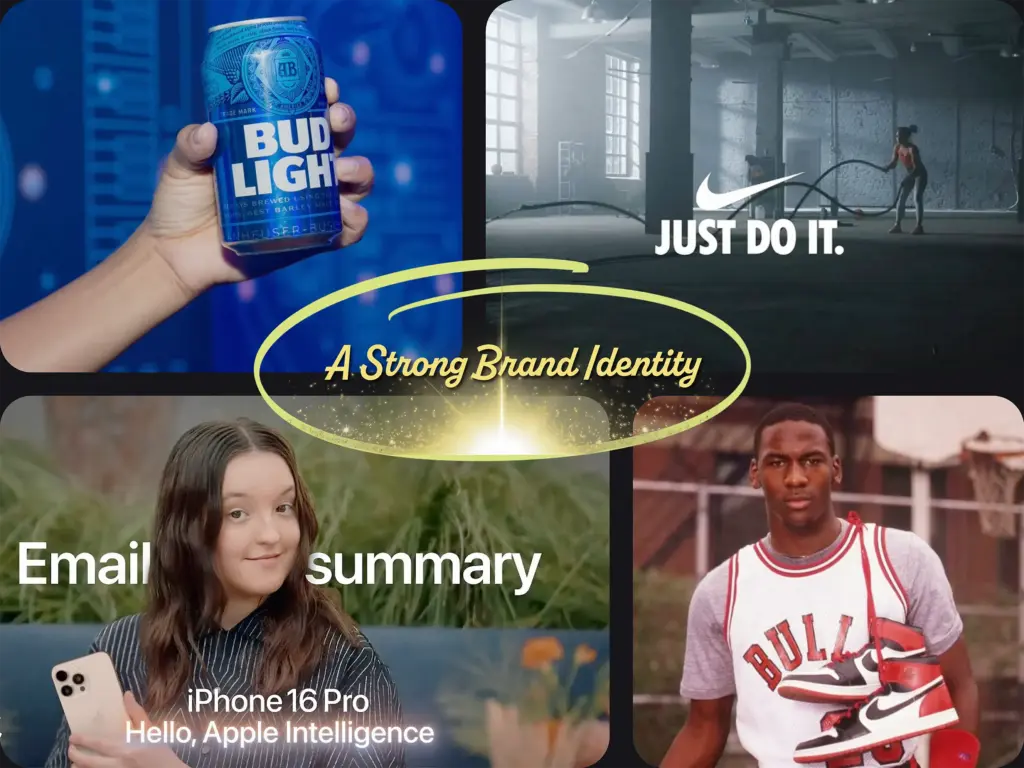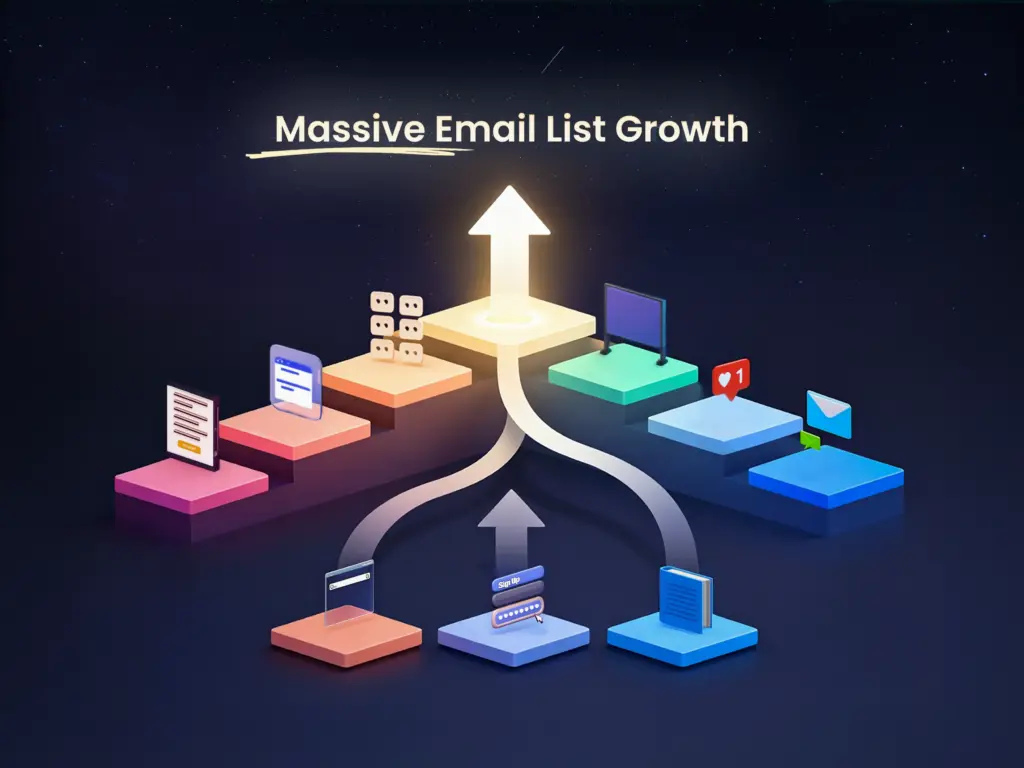For small to mid-sized businesses, standing out in a competitive market can feel like an uphill battle. A powerful brand identity is your secret weapon to charge higher prices, build loyal customers, and grow with confidence. These elements are essential components necessary for creating a successful brand identity that resonates with your target audience. It’s not just about a logo or a catchy tagline—it’s about deliberately connecting your business with outcomes your customers value.
This guide, packed with actionable steps, will show you exactly how to build a powerful brand identity for small business success.
- Brand Identity: Crucial for small businesses to connect with desired customer outcomes beyond just visuals like logos.
- Charge Higher Prices: Effective branding enables businesses to ask for more money by creating perceived value.
- Build Loyalty: Establishing emotional connections with customers encourages repeat purchases and long-term commitment.
- Gain Competitive Edge: A distinct brand protects against competitors, ensuring customer preference over cheaper alternatives.
What Is a Brand Identity?
A brand identity is the intentional pairing of your business with outcomes your customers care about. It’s more than visuals like logos or colors—it’s the consistent association between your business and the feelings, values, or results your audience seeks.
A well-defined brand identity is key to effective communication of a brand’s unique values and offerings. For example, Apple pairs its brand with innovation and quality, making customers feel like they’re part of something cutting-edge when they buy. Many branding definitions, like “a gut feeling” or “a set of stories,” are vague and hard to act on.
Here’s the clear truth: branding is about linking your product or service with positive outcomes for your ideal customers. A local coffee shop might pair its brand with “community,” so every visit feels like a warm, familiar experience. This deliberate pairing shapes why customers choose you over competitors. A well-defined brand identity represents the brand’s values and helps in distinguishing it from competitors.
For small businesses, a strong brand identity is critical. Without it, you’re stuck competing on price, blending into the crowd. With it, you can differentiate your business, foster loyalty, and create a lasting impression.
Why a Strong Brand Identity Fuels Small Business Success

A powerful brand identity delivers tangible benefits that directly impact your bottom line. Here’s why it’s a must for small to mid-sized businesses:
- Charge Higher Prices: A strong brand lets you charge more for similar products or services. Think of Yeti, which sells $40 tumblers while competitors offer similar ones for $10. Yeti’s brand—rooted in durability and adventure—creates a perception of higher value. Small businesses can do the same by aligning their brand with outcomes like quality or exclusivity.
- Attract More Customers: A recognizable brand with positive associations grabs attention. Generic businesses struggle to stand out, but a branded business draws customers in. For example, a local gym tied to “community fitness” will attract more interest than a generic gym with no clear identity.
- Build Loyal Customers: A strong brand creates an emotional connection, encouraging repeat purchases. Harley-Davidson doesn’t just sell motorcycles—it sells a lifestyle. Small businesses can foster loyalty by consistently delivering on their brand promise, whether it’s fast service or unique products.
- Gain a Competitive Edge: A distinct brand protects you from competitors. Loyal customers are less likely to switch to a cheaper alternative, giving you an advantage over bigger players with larger budgets.
- Simplify Growth: A strong brand makes it easier to launch new products or services. Customers who trust your brand will try your new offerings, helping you scale faster.
How a Strong Brand Identity Drives Profits
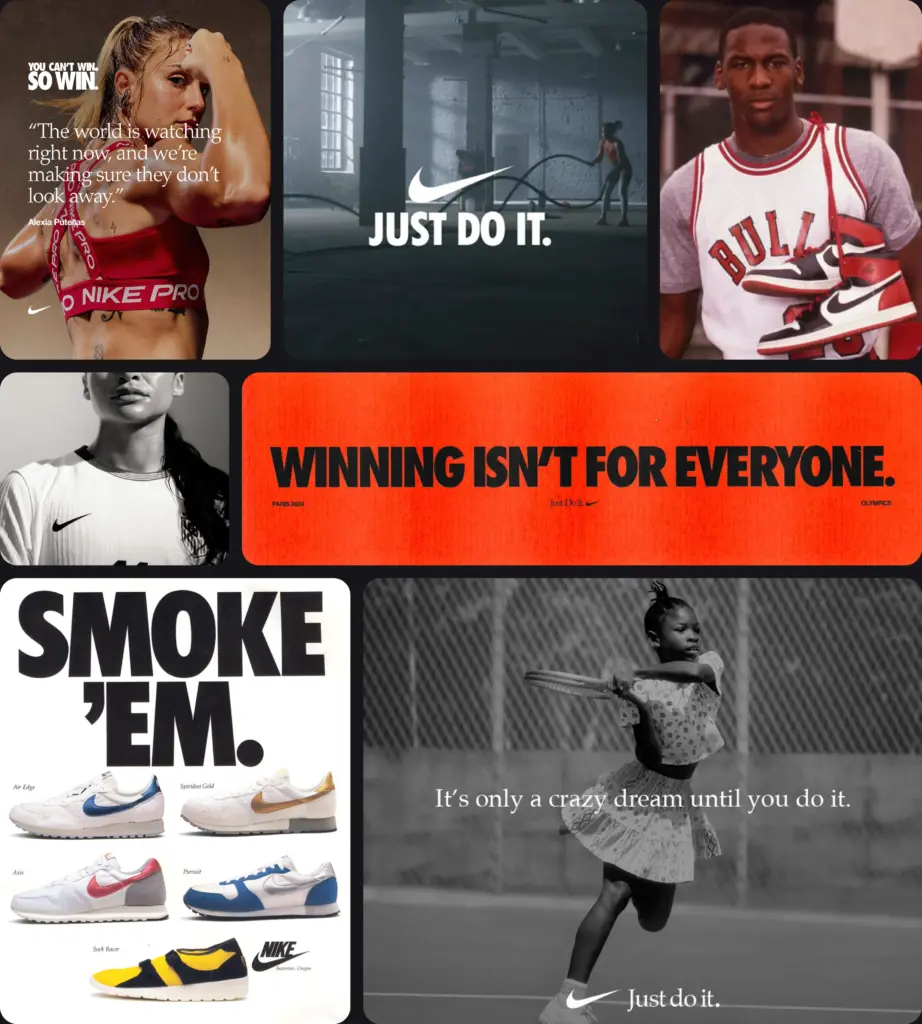
A strong brand identity boosts revenue, reduces marketing costs, and builds lasting value. Here’s how it works, with insights drawn from real-world examples.
Brand elements are crucial in creating guidelines that ensure all marketing materials align with the brand’s desired image.
Turn Commodities into Premium Products
A strong brand transforms generic products into premium offerings. A plain $5 T-shirt becomes a $50 must-have when paired with a brand like Nike, associated with “winning” and “athletic excellence.” The logo isn’t the magic—it’s the deliberate pairing with outcomes customers want to associate with.
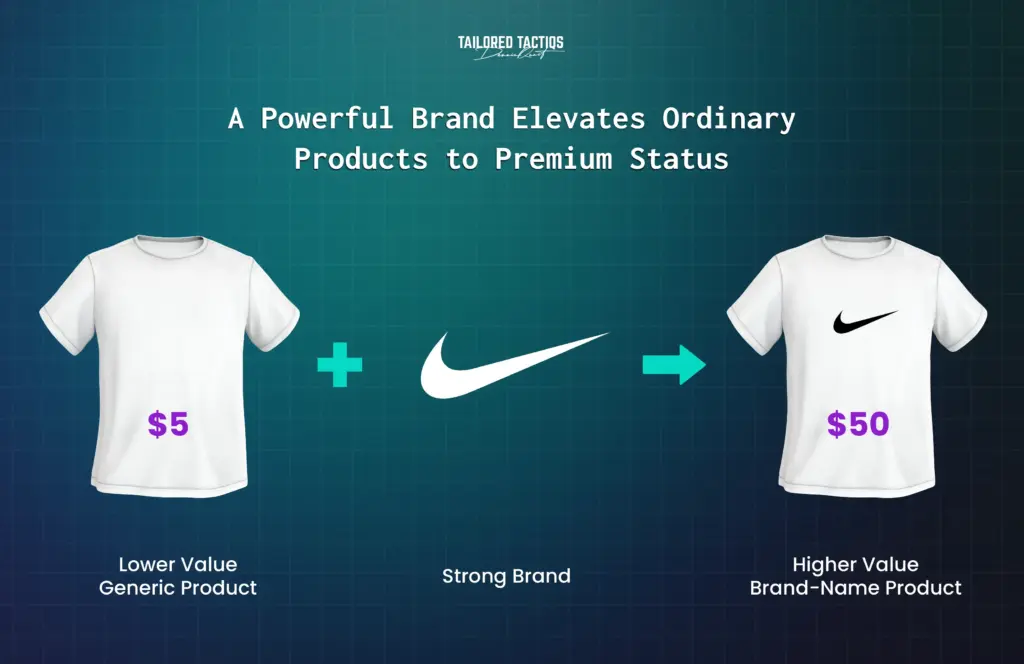
For small businesses, this means identifying what your customers value and reinforcing that connection. A local landscaping company might pair its brand with “reliable, transformative outdoor spaces,” allowing it to charge more than competitors for similar services.
Shape Customer Behavior
A strong brand influences how customers act—making them more likely to buy, recommend, or return. This is called “influence.” For example, a small coffee roaster pairing its brand with “sustainability” attracts eco-conscious customers who choose it over mass-market brands, even at a higher price.
Consider the Bud Light example. A controversial campaign paired the brand with an outcome that alienated its core audience, leading to sales losses. To recover, Bud Light aligned with popular figures like Shane Gillis and UFC, reconnecting with customers’ values and boosting sales.

Small businesses can learn from this: pair your brand with what your audience loves, and avoid what they don’t.
Measure Your Brand’s Impact
To ensure your brand is working, track three key metrics:
- Influence: Does your brand change customer behavior? If customers recognize your brand and act (e.g., buying or recommending), it has influence.
- Direction: Are customers moving toward your business (buying, engaging) or away (ignoring, criticizing)? A strong brand drives positive actions.
- Reach: How many people know your brand? More reach amplifies your influence.
You can measure these through sales data, customer feedback, or social media engagement. For example, a surge in repeat purchases after a branded campaign shows growing influence and positive direction.
In short: A well-defined brand identity not only reflects a brand's values and mission but also helps to resonate with the target market, build awareness, and differentiate from competitors.
Step-by-Step Guide to Building Your Brand Identity
Building a powerful brand identity doesn’t need a big budget—just intention and consistency. Follow these practical steps to create and grow your brand, tailored for small to mid-sized businesses.
Creating a brand identity encompasses various elements, including visual design and the brand’s voice, which reflect its ethos and mission. Market research is crucial to ensure the brand identity resonates with the target audience and builds awareness.
Step 1: Know Your Ideal Customer
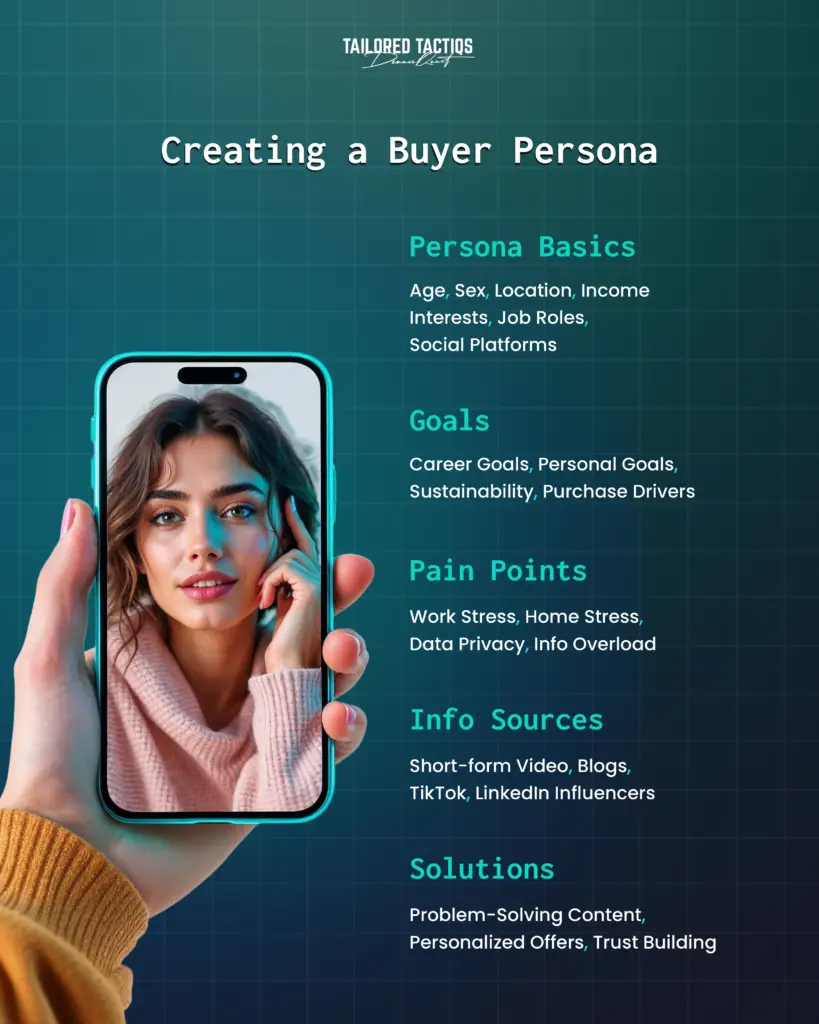
Your brand must resonate with your target audience. Create a detailed customer profile, also known as a “Buyer Persona,” by answering:
- Demographics: Age, gender, income, location (e.g., “25–40-year-old professionals in suburban areas”).
- Values: What do they care about? (e.g., “values quality, seeks convenience”).
- Pain Points: What problems do they face? (e.g., “struggles with unreliable services”).
Understanding your target customers is an essential component of brand identity and marketing strategy. Effective market research to define customer personas helps businesses differentiate themselves and appeal more successfully to their chosen audience. To find out more about tailoring content for your target audience, check out our article titled “What Is Content Marketing and Why Is It Important?“.
Pro tip: Write a one-paragraph customer persona. For example, a pet store might target “pet owners aged 30–50 who value natural products and shop locally.” Use this to guide all branding decisions.
Step 2: Define Your Brand’s Core Outcome
Identify the key outcome your customers seek. This could be:
- Emotional: Feeling confident, relaxed, or inspired.
- Practical: Saving time, solving a problem.
- Aspirational: Achieving success, living sustainably.
Understanding and articulating your brand’s identity is essential, as it defines your brand’s unique characteristics and contributes to its perceived personality and values.
For example, a small accounting firm might focus on “peace of mind” for business owners stressed about taxes. Every branding effort should reinforce this outcome.
Pro tip: Write a single sentence summarizing your brand’s core outcome. Example: “Our bakery delivers warmth and nostalgia through fresh, homemade treats.”
Step 3: Choose Smart Brand Pairings
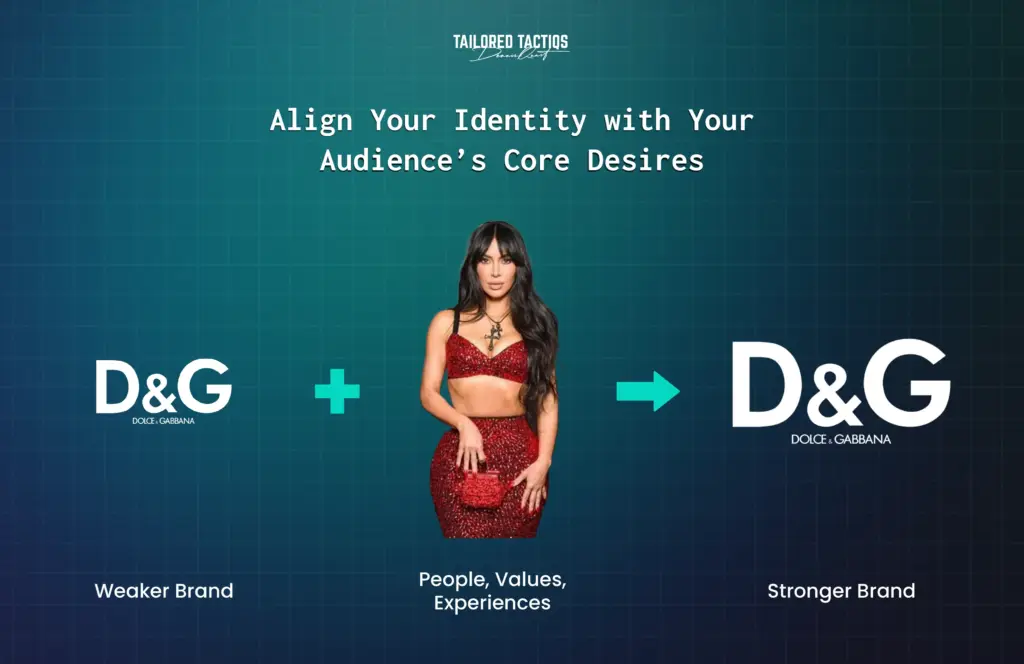
Pair your brand with elements your ideal customers love. Options include:
- Values: Quality, sustainability, community.
- People: Your founder story, local figures, or relatable influencers.
- Experiences: Exceptional service, exclusive events, or a welcoming atmosphere.
Defining your brand voice is essential for effective communication with your audience. It encompasses the personality and tone of your messaging across various components like advertising and content, fostering understanding of your brand’s mission and differentiating it from competitors.
For example, a small fitness studio might pair its brand with “empowerment” by sharing client success stories and hosting motivational classes.
Avoid Mistakes: Don’t pair your brand with elements that could alienate your audience. A single misstep—like associating with a controversial topic—can hurt your brand. If you slip up, recover by overwhelming customers with positive pairings, like Bud Light did with UFC campaigns after a misstep.
Pro tip: List 3–5 pairings for your brand. Example: A coffee shop might choose “community, sustainability, artisanal quality.” Create one customer touchpoint (e.g., a sign, email, or social post) for each pairing this week.
Step 4: Deliver a Top-Notch Product or Service

Your brand sets expectations, but your product or service must deliver. If you’re charging premium prices, your offering needs to be reliable and aligned with your brand promise.
Effective brand management is crucial in organizing and influencing audience perception of your brand. It helps streamline brand assets, facilitates collaboration across teams, and enables organizations to adapt their brand identity, thereby accelerating brand growth.
- Quality Check: Test your product or service for consistency. For example, a catering business should ensure every dish meets high standards.
- Customer Experience: Train staff to reflect your brand values, like friendliness or expertise.
- Post-Purchase: Follow up with customers to ensure satisfaction and reinforce your brand.
A great product strengthens your brand. If a customer buys a Nike T-shirt and finds a hole, they’ll question the brand’s “excellence.” But a solid product reinforces the positive association, encouraging repeat purchases.

When Apple announced Apple Intelligence in 2024, its reputation for delivering polished, finished products was met with a rollout plan that felt incomplete to some, with key features promised for a later date. This created a gap between the brand’s “it just works” promise and the immediate reality, leaving audiences to question if the product was truly ready.
Pro tip: Conduct a “brand audit” of your product/service. Ask: Does it deliver the promised outcome? Fix any gaps (e.g., improve packaging, streamline delivery).
Step 5: Share Your Brand Through Content

Content is a powerful way to reinforce your brand pairings and connect with customers. Ideas include:
- Social Media: Post customer stories, behind-the-scenes content, or tips tied to your brand values.
- Emails: Send newsletters with value-driven content, like exclusive offers or industry insights.
- In-Person: Use signage, packaging, or staff interactions to reflect your brand.
- Videos: Share short, authentic videos showcasing your brand personality.
Managing and creating brand assets through the use of structured brand guidelines and templates is crucial. These tools enable teams to maintain brand compliance and collaborate efficiently, ensuring that all materials reflect the brand’s identity and are easily accessible for updates and adjustments.
For example, a pet store might post social media updates about “choosing natural pet food,” reinforcing its brand as a trusted, health-focused business.
Pro tip: Create a 30-day content plan. Plan 3 touchpoints per week (e.g., 1 customer story, 1 tip, 1 product highlight) that tie to your brand pairings.
Step 6: Monitor and Adjust Your Brand
Regularly check if your brand is resonating. Use these metrics:
- Influence: Are customers engaging (e.g., buying, commenting)? Track sales or social interactions.
- Direction: Are they buying or recommending you? Monitor reviews and referrals.
- Reach: How many people know your brand? Count followers, website visits, or store traffic.
Brand strategists, like us, play a vital role in defining and constructing a brand’s identity. They help establish emotional connections with the audience, ensuring differentiation from competitors and long-term success.
If a pairing isn’t working (e.g., a campaign gets little response), try a new angle. For example, if “luxury” doesn’t connect, pivot to “reliability.”
Pro tip: Review your metrics monthly (e.g., sales, reviews). Adjust one underperforming effort (e.g., rewrite a flyer with a new pairing).
Establishing Brand Guidelines
Brand guidelines are essential for maintaining a consistent brand identity across all channels. They provide a comprehensive framework for how your brand should be represented, ensuring that every touchpoint reflects your brand’s values and personality.
Your brand guidelines should include detailed instructions for the use of your logo, color palette, typography, and imagery. They should also define your brand’s tone and personality, providing clear direction on how your brand should communicate in different contexts.
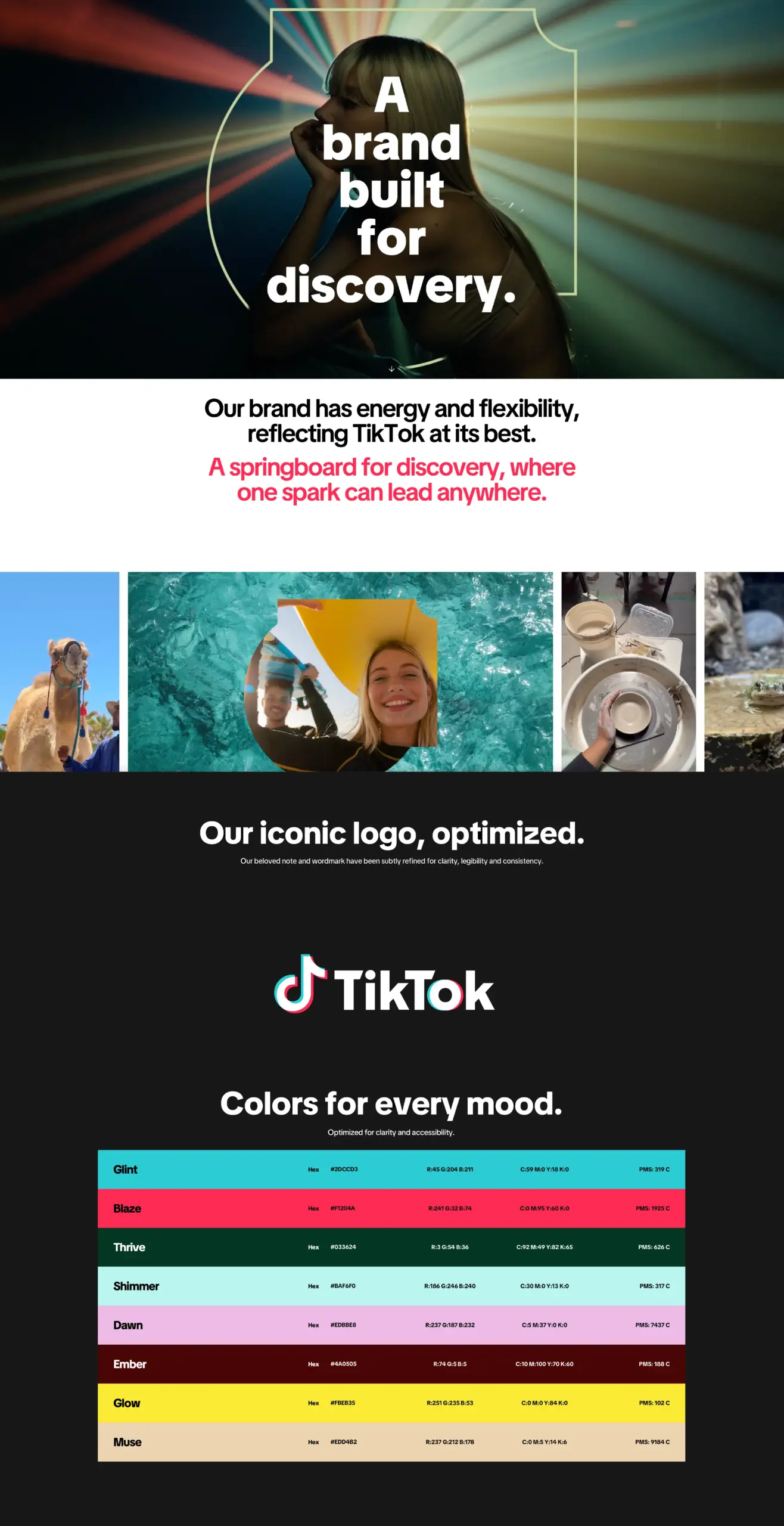
It’s important that these guidelines are easily accessible to all employees and partners who will be working with your brand. Regularly reviewing and updating your brand guidelines is essential to ensure they remain relevant and effective as your brand evolves.
By adhering to well-defined brand guidelines, you can prevent mixed messages and ensure that all your marketing efforts are aligned with your overall brand strategy. This consistency helps protect your brand’s integrity and maintain its reputation, creating a cohesive brand identity that resonates with your audience and supports your business goals.
Real-World Examples for Small Businesses
Here are two examples of how small businesses can apply these steps:
- Brew & Bond Coffee Shop
- Customer: Young professionals and families who value community.
- Pairing: “Connection” via local events and cozy vibes.
- Content: Social posts about book clubs and artist spotlights.
- Result: Loyal customers choose Brew & Bond over chains, driving steady sales.
Successful brands go beyond just creating a logo and color palette; they invest time in developing a comprehensive brand identity that includes a strong purpose alongside intentional visual and written elements.
- Green Clean Eco-Friendly Service
- Customer: Eco-conscious homeowners.
- Pairing: “Sustainability” with green products and educational content.
- Content: Flyers with “Eco-Friendly Cleaning Tips.”
- Result: Premium pricing and a reputation as a trusted green brand.
Common Branding Mistakes to Avoid
Avoid these traps to keep your brand strong:
- Inconsistent Messaging: Ensure your signage, emails, and interactions align. A professional store paired with sloppy emails confuses customers. Fix: Create a brand style guide (e.g., tone, colors, values) and follow it.
- Copying Competitors: Don’t mimic rivals—it weakens your uniqueness. Many brands base their identity on imitation or fleeting market trends, leading to a lack of distinctiveness and meaningful audience connection. Highlight what sets you apart. Fix: List 3 unique traits (e.g., faster service, local sourcing) and feature them in your content.
- Ignoring Feedback: Negative reviews can reveal misaligned pairings. Use them to improve. Fix: Respond to every review and address concerns (e.g., “We’ve upgraded our delivery!”).
- Poor Product Quality: A great brand gets customers in, but a bad product pushes them away. Fix: Follow up after purchases with a thank-you note and satisfaction survey.
Final Tips for Branding Success
- Start Small: Focus on one pairing (e.g., “reliability”) and one channel (e.g., social media) to build momentum.
- Be Consistent: Reinforce your pairings in every customer interaction, from emails to packaging.
- Test and Learn: Try new pairings and measure results. If “exclusivity” flops, test “affordability.”
- Stay Authentic: Your brand should reflect your business’s true values to build trust.
A strong brand identity for small businesses provides a solid foundation for establishing emotional connections with consumers, which is crucial for building lasting relationships.
By following these steps, you can establish a powerful brand identity for small business success that attracts loyal customers, supports premium prices, and fuels growth.
Start today by defining your ideal customer and testing one pairing this week. Your brand—and your profits—will grow stronger with every step.
